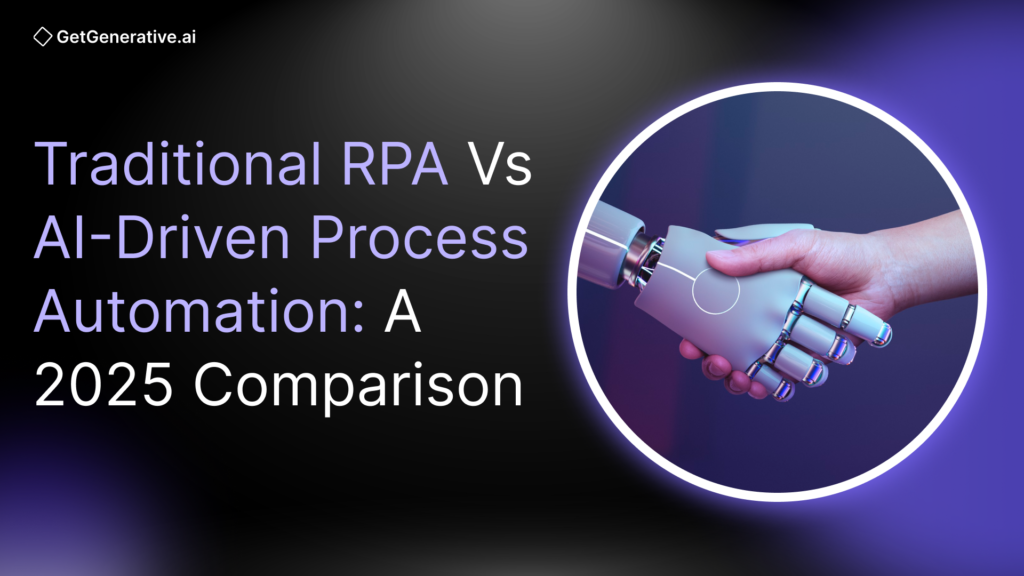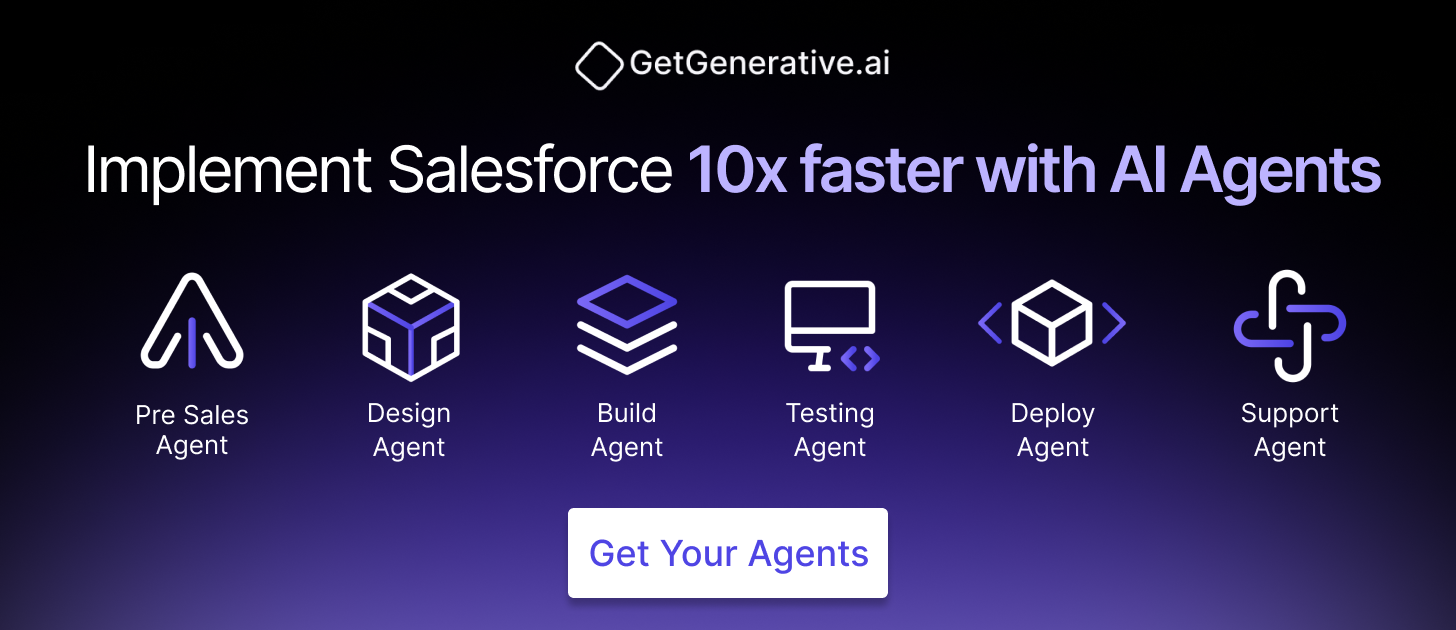Traditional RPA vs AI-Driven Process Automation: A 2025 Comparison
In 2025, with digital transformation topping executive agendas, businesses are increasingly turning to automation to boost agility, efficiency, and growth.
According to industry surveys, 66% of organizations have already automated at least one core business process, while 77% of IT and business leaders report current or planned investments in automation to mitigate the impact of remote work, talent shortages, and cost pressures.
But with automation now spanning a spectrum of technologies, enterprises face a pivotal decision: should they continue scaling traditional Robotic Process Automation (RPA) for structured, rule-based tasks, or shift toward AI-driven process automation—also known as intelligent automation or hyperautomation—that enables intelligent decision-making and adapts to unstructured data?
This blog provides a comprehensive comparison of traditional RPA vs AI-powered automation in 2025, with a special focus on Salesforce-centric ecosystems.
Traditional RPA: The Foundation of Enterprise Automation
What Is RPA?
Robotic Process Automation (RPA) emerged in the 2010s as a way to mimic human interactions with software. Think of bots that click, copy, and paste—digitally. Tools like UiPath, Automation Anywhere, and Blue Prism became household names by automating tasks like invoice data entry, claims processing, and CRM updates.
Unlike APIs or custom integrations, RPA operates on the front end, mimicking user actions across applications. It’s ideal for high-volume, rule-based, repetitive tasks—especially in environments with legacy systems or minimal API access.
RPA Adoption and Growth
In 2023, RPA had become a cornerstone of enterprise automation:
- Avasant reports 31% of enterprises had deployed RPA, up from 20% in 2021.
- Globally, 66% of businesses have automated at least one process.
- First-year ROI from RPA ranges between 30% to 200%, depending on process complexity.
- The RPA software market is expected to reach $25–30 billion by mid-decade, growing at ~20% CAGR.
- The broader hyperautomation space, which includes RPA + AI + analytics + low-code tools, is projected to hit $500B+ by 2025.
Enterprise Use Cases
Back-office operations have been the most common entry points for RPA:
- Finance: Automating accounts payable, reconciliations, and financial reporting.
- Healthcare: Claims processing, insurance verifications, and patient onboarding.
- Retail & Telecom: Order entry, customer onboarding, and trouble ticketing.
In the Salesforce ecosystem, RPA helps bridge gaps between Salesforce and legacy systems. Bots can:
- Transfer order data from a third-party portal into Salesforce.
- Scrape leads from web sources and auto-populate CRM fields.
- Automate invoice generation and follow-ups triggered by Salesforce events.
Recognizing this need, Salesforce introduced MuleSoft RPA in 2021, enabling click-based automation across disconnected systems as part of the Einstein Automate suite.
Benefits and Limitations
Strengths of RPA:
- Speed to Value: Low-code, UI-based deployment enables faster implementation.
- Cost Savings: Enterprises see 10–50% reductions in operating costs.
- Non-Disruptive: Works with existing systems—no backend changes needed.
- Scalable for Repetitive Tasks: Ideal for structured environments and high-volume workflows.
Limitations of RPA:
- No Learning Capability: Bots follow fixed rules and can’t handle change.
- Fragility: UI or data format changes break bots easily, leading to maintenance burdens.
- Limited Scope: Cannot interpret unstructured data like handwritten notes, emails, or images.
- Bot Sprawl: Scaling without governance can result in complex, unmanageable bot networks.
As organizations matured in their automation journeys, many realized that RPA alone wasn’t enough.
The inability to deal with unstructured data, make decisions, or adapt to dynamic environments prompted a shift toward intelligent automation, blending RPA with AI to achieve greater efficiency and resiliency.
Also Read – The Future of Salesforce Consulting in 2025
AI-Driven Automation: The Next Frontier
What Is AI-Powered Automation?
In 2025, AI-driven automation has moved from pilot programs to production-grade deployments across industries. This next-gen automation fuses traditional RPA with AI technologies like machine learning (ML), natural language processing (NLP), computer vision, and even generative AI, enabling systems to understand unstructured data, make decisions, and continuously improve.
AI-powered automation doesn’t just follow instructions—it interprets, adapts, and evolves. It can read scanned documents, analyze speech, understand intent in emails, or detect fraud—all actions beyond the capabilities of traditional rule-based bots.
Adoption and Investment Trends
Enterprise investment in AI automation is accelerating:
- $337 billion will be spent globally on AI-related technologies in 2025 (IDC).
- 67% of that spending will focus on embedding AI into operational workflows.
- Gartner predicts the hyperautomation market (RPA + AI + analytics + low-code) will exceed $500 billion and touch 20% of all business processes.
- 59% of C-suite executives plan to increase budgets for automation and AI.
AI Capabilities That Transform Automation
- Unstructured Data Handling: NLP models interpret customer emails; computer vision tools extract text from scanned forms.
- Learning and Adaptation: ML algorithms improve over time using feedback loops and reinforcement learning.
- Predictive Analytics: AI forecasts demand, detects anomalies, and anticipates failures, enabling proactive actions.
- Generative AI: LLMs like GPT can write emails, create summaries, or even generate automation scripts based on natural language prompts.
Example:
A leading CRM platform, Salesforce, now integrates Einstein GPT, allowing users to auto-generate case summaries, email drafts, or customer responses—all using internal data.
Einstein and AI in Salesforce
Salesforce has heavily invested in embedding AI across its platform:
- Einstein Automate: Orchestrates intelligent workflows using AI-powered decision logic.
- MuleSoft RPA: Automates across legacy systems and external interfaces.
- AI Cloud: Hosts both pre-trained and custom ML models on Salesforce infrastructure.
- Einstein GPT: Leverages LLMs to generate CRM content—from sales outreach to knowledge base articles.
- Einstein Document Reader: Extracts data from PDFs and uploads it into Salesforce Flow.
In 2023, Salesforce customers were running:
- 38.2 billion automated flows daily
- 116 billion Einstein predictions every day
This scale illustrates how AI is not just integrated, but foundational to the Salesforce platform.
Business Impact of AI-Driven Automation
- Faster Process Cycles: Reduced manual steps and faster decision-making.
- Higher Automation Coverage: AI enables automation of processes with variation and judgment.
- Smarter Outcomes: Predictive insights drive better customer experiences and operational decisions.
- Labor Productivity Boosts: According to Accenture, generative AI can raise productivity by up to 40% in certain domains like software development, customer service, and sales.
Risks and Governance Challenges
AI automation also introduces new challenges:
- Data Readiness: AI requires large, clean, structured datasets.
- Model Oversight: AI systems need ongoing monitoring to manage bias, drift, and explainability.
- Ethical AI: Enterprises must enforce fairness, transparency, and auditability.
- Regulatory Compliance: GDPR, HIPAA, and other standards apply to data processed by AI.
In fact, IDC estimates 30% of enterprises may pause or revise GenAI projects if governance, cost, or ethical risks aren’t addressed.
Also Read – Einstein GPT vs Custom AI Models: What Should You Choose?
RPA vs AI Automation
Feature | Traditional RPA | AI-Driven Automation |
Task Type | Structured, rule-based | Unstructured, cognitive |
Input Handling | Structured data only | Unstructured data (text, images, audio) |
Learning | No | Yes – learns from feedback |
Adaptability | Brittle to changes | Adaptive to new formats |
Skills Needed | Low-code, business analyst | Data scientists, AI engineers |
Time to ROI | Quick (weeks–months) | Medium (months–quarters) |
Examples | Invoice copying, screen scraping | Email intent classification, IDP, fraud detection |
Limitations | Breaks with change, can’t reason | Data dependency, model governance required |
Key Insight:
Enterprises are no longer choosing between RPA and AI—they’re combining them. The emerging standard is hyperautomation, which layers RPA with AI to automate both repetitive tasks and cognitive decisions.
Salesforce-Centric Intelligent Automation Strategies
For Salesforce-led organizations, intelligent automation spans multiple components:
- Flow + Flow Orchestrator: Orchestrate business logic and multi-step approvals inside Salesforce.
- MuleSoft RPA: Automate across disconnected systems using UI-based bots triggered from Salesforce.
- Einstein GPT: Generate personalized content for sales, marketing, and service automatically.
- Einstein Document Reader: Convert unstructured data (e.g., scanned forms) into CRM-ready inputs.
- GetGenerative.ai: A powerful AI studio that auto-generates proposals, configurations, and workflows within Salesforce—accelerating design and delivery using large language models.
Example: A sales process in Salesforce could use Flow to trigger a MuleSoft RPA bot to fetch legacy order data, pass it through Einstein GPT for a draft proposal, and surface a lead score from AI Cloud—all without manual intervention.
Industry Use Cases: RPA and AI in Action
Finance and Banking
Banks were early adopters of automation:
- RPA: Bots automate loan application reviews, account reconciliations, and report generation. One mortgage lender used RPA to cut approval time from hours to minutes.
- AI: Machine learning models flag fraud by detecting anomalies in transaction patterns. AI chatbots now handle up to 80% of routine inquiries, cutting support costs and improving service.
A U.S. bank combined RPA and AI to slash loan processing time by 60%. Another firm automated pricing models for liability products using RPA + AI, offering real-time quotes online—something previously impossible.
Healthcare and Life Sciences
- RPA: Hospitals automate insurance verification, patient intake, and billing workflows. One eyecare chain saved 37,000 labor hours annually and reduced claim-to-cash cycle time by 9 days.
- AI: Automates medical coding, chart reviews, and even diagnostics. One provider saw 95% reduction in manual coding effort and 90% improvement in accuracy using AI + RPA bots.
Healthcare providers now use AI bots to schedule over 50% of appointments through chat/voice, freeing up front-desk staff and cutting operational costs by over 35%.
Manufacturing and Supply Chain
- RPA: Automates purchase orders, invoice matching, and ERP data entry. One manufacturer replaced 4 clerks with bots for supplier invoice handling.
- AI: Predictive models forecast demand, detect equipment failure, and optimize production. Paired with RPA, AI can automatically trigger maintenance and inventory workflows.
A manufacturer used AI to predict machine failure and RPA to auto-schedule repairs—cutting unplanned downtime by 25% and improving on-time delivery by 15%.
Real-World Enterprise Examples
Company | Industry | Automation Type | Outcome |
U.S. Eyecare Chain | Healthcare | RPA + AI | Saved 37,000 hours/year, 9-day faster claims |
Nursing Home Provider | Healthcare | AI Coding Bots | 95% less manual effort, 85% faster processing |
Trade Finance Bank | Banking | RPA Bots | Full automation of letters of credit closures |
Insurer | Insurance | RPA + AI | 67% faster claims, 83% lower human effort |
Electronics Manufacturer | Manufacturing | AI + RPA | 20% lower inventory cost, 15% better fulfillment |
These outcomes validate that RPA and AI are complementary, not competing. Organizations are unlocking end-to-end automation when they pair rule-based bots with intelligent decision-making.
Strategic Recommendations for Salesforce Leaders
1. Map Automation Opportunities
Begin with process analysis. Use tools like process mining to identify repetitive, rules-based tasks ideal for RPA. Target variable, decision-heavy tasks for AI pilots.
2. Combine, Don’t Choose
Adopt hyperautomation: deploy RPA for routine data movement and AI for decisions and interpretation. Most major vendors—including Salesforce—offer integrated stacks to do both.
3. Use Salesforce Native Capabilities First
Before reaching for external tools:
- Automate with Flow and Flow Orchestrator
- Use Einstein GPT for generative content
- Leverage MuleSoft RPA for legacy data
- Extract insights from documents with Einstein Document Reader
4. Build Governance Early
Establish an Automation Center of Excellence (CoE) to standardize tooling, track KPIs, and enforce AI model governance (explainability, bias checks, version control).
5. Measure What Matters
Tie automation to tangible goals:
- Cost savings (e.g., 25–50% OPEX reduction)
- Cycle time improvements (claims, onboarding, service)
- Workforce impact (employee satisfaction, customer responsiveness)
Use ROI benchmarks from Salesforce and industry analysts as baselines.
Conclusion
The automation debate in 2025 is no longer “RPA vs AI”—it’s about how to orchestrate both effectively. RPA provides scalable precision for known tasks. AI introduces intelligence, learning, and adaptability. Together, they form the backbone of hyperautomation, which analysts predict will influence 20% of all business processes globally by 2025.
If you’re rethinking how automation fits into your Salesforce strategy, GetGenerative.ai can help.
It’s AI-powered workspace and agents support everything from proposal creation to go-live planning—so your team can focus more on outcomes, not manual tasks.
Book a demo today to see how it works!




